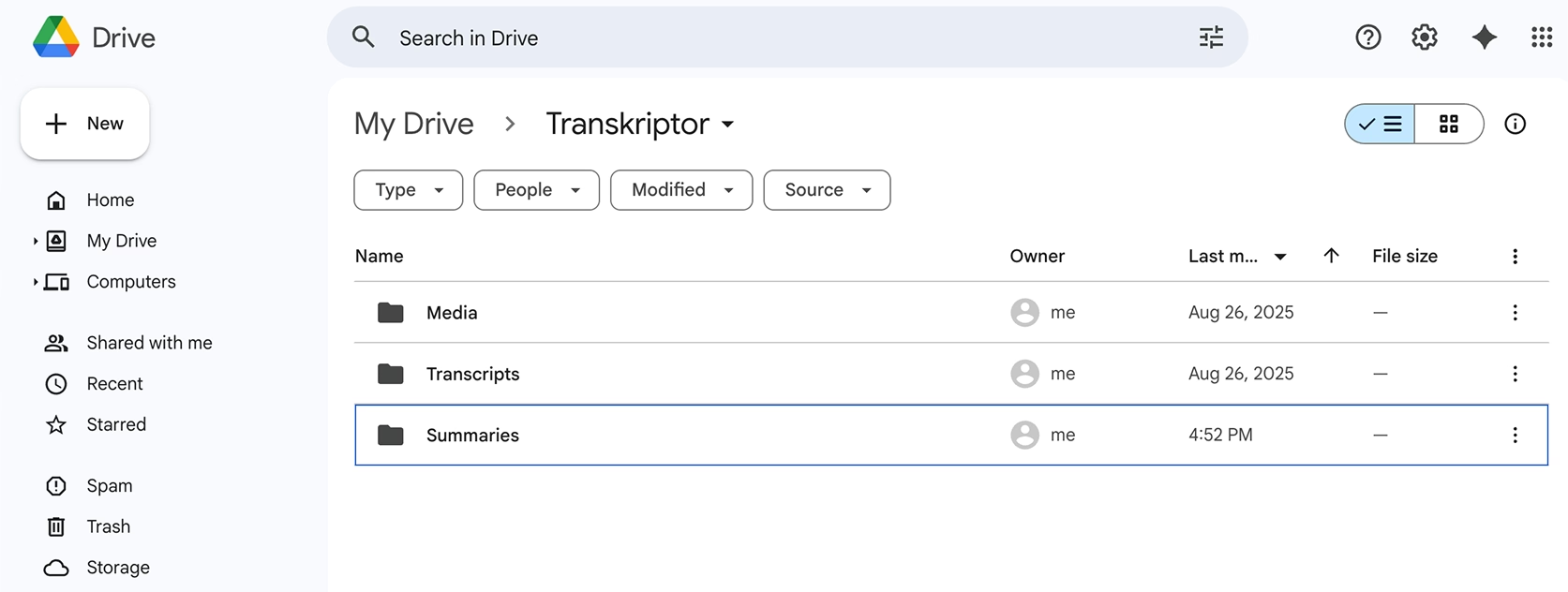Keeping track of meeting transcripts and audio files manually can be both tedious and time-consuming. With the Google Drive integration, Transkriptor takes care of this for you by automatically storing, organizing, and making your transcripts easily accessible in Drive. This way, your important conversations are always secure, searchable, and never lost.
Key Benefits of Integrating Google Drive with Transkriptor
Automatic Backup: Your transcripts and audio files are safely stored in Google Drive with enterprise-grade protection, so you never have to worry about losing important information.
Easy Access & Sharing: Access transcripts anytime and share them instantly with teammates, clients, or students, without the need for extra downloads.
Organized in One Place: All files are neatly saved in a dedicated Transkriptor folder inside Google Drive, keeping your meetings, calls, and lectures easy to track.
Collaboration Made Simple: Work together seamlessly by reviewing, commenting, or editing transcripts directly in Google Docs.
How to Set Up Google Drive Integration in Transkriptor
Easily connect your Google Drive account to Transkriptor in just a few clicks to automatically save all your transcripts, summaries, and recordings directly to your Drive
Connect Google Drive
Go to the Integrations tab in your Transkriptor dashboard.
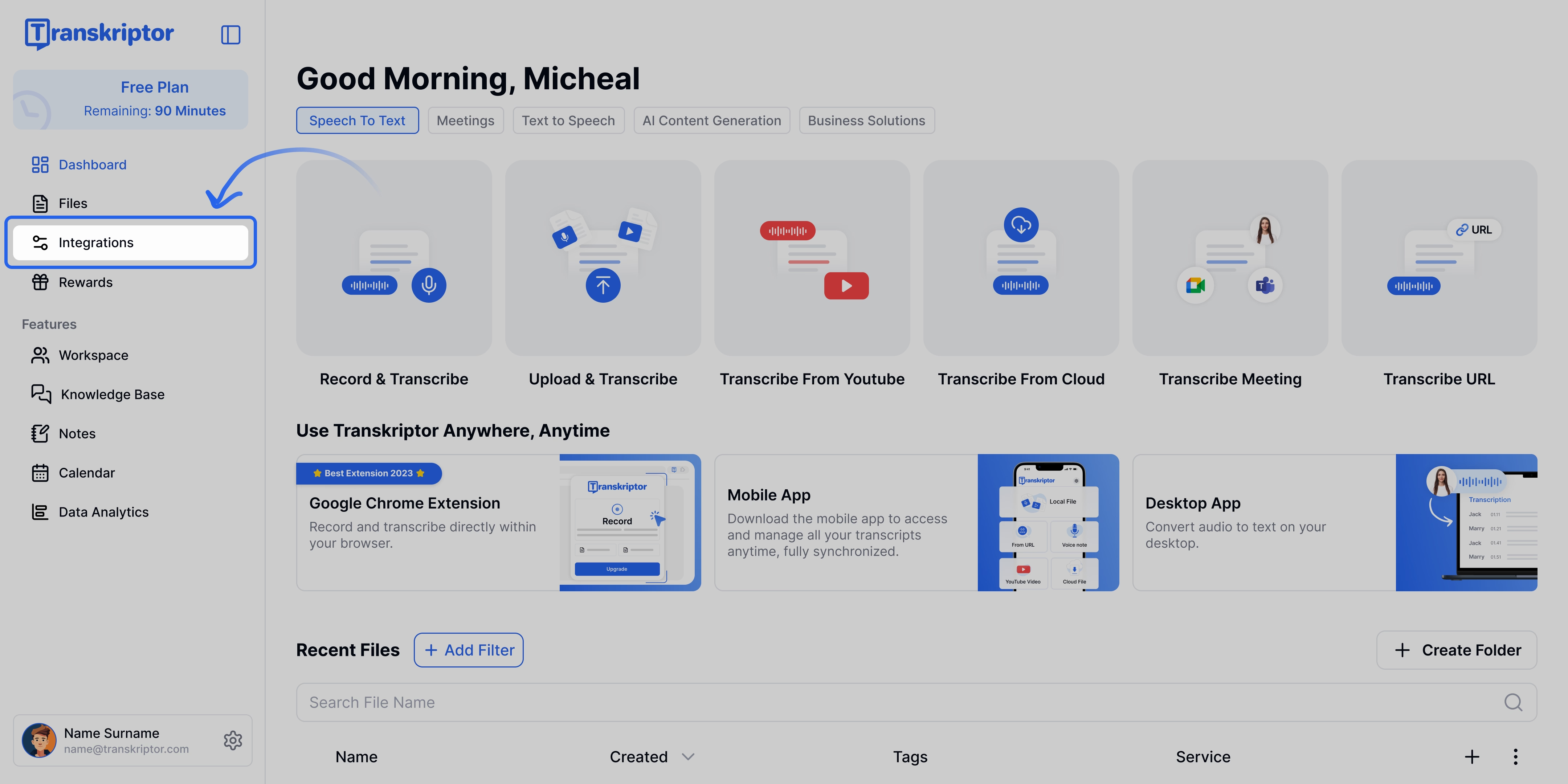
Find Google Drive and select it.
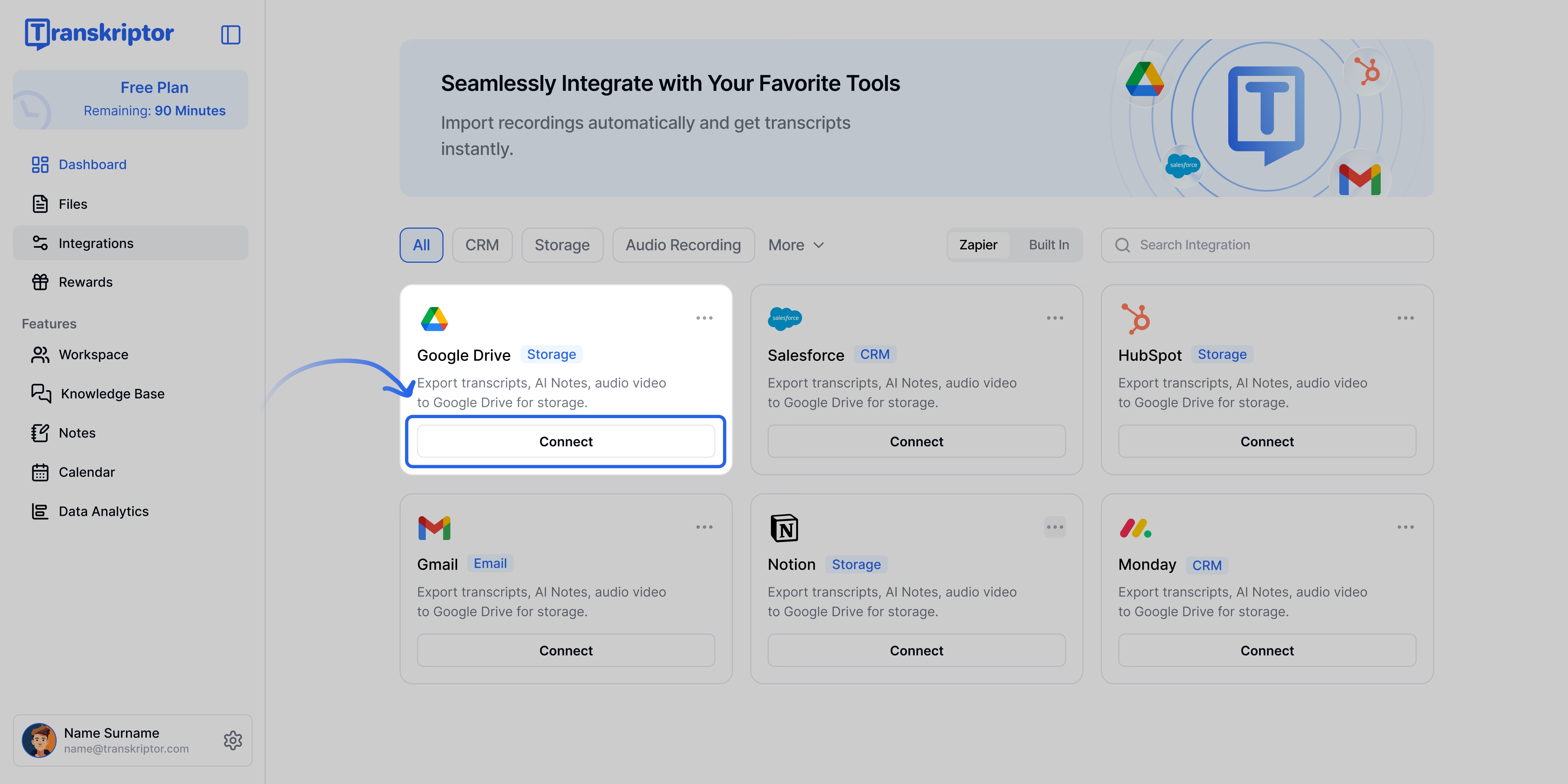
Click Connect, then sign in with your Google account and approve the necessary permissions.
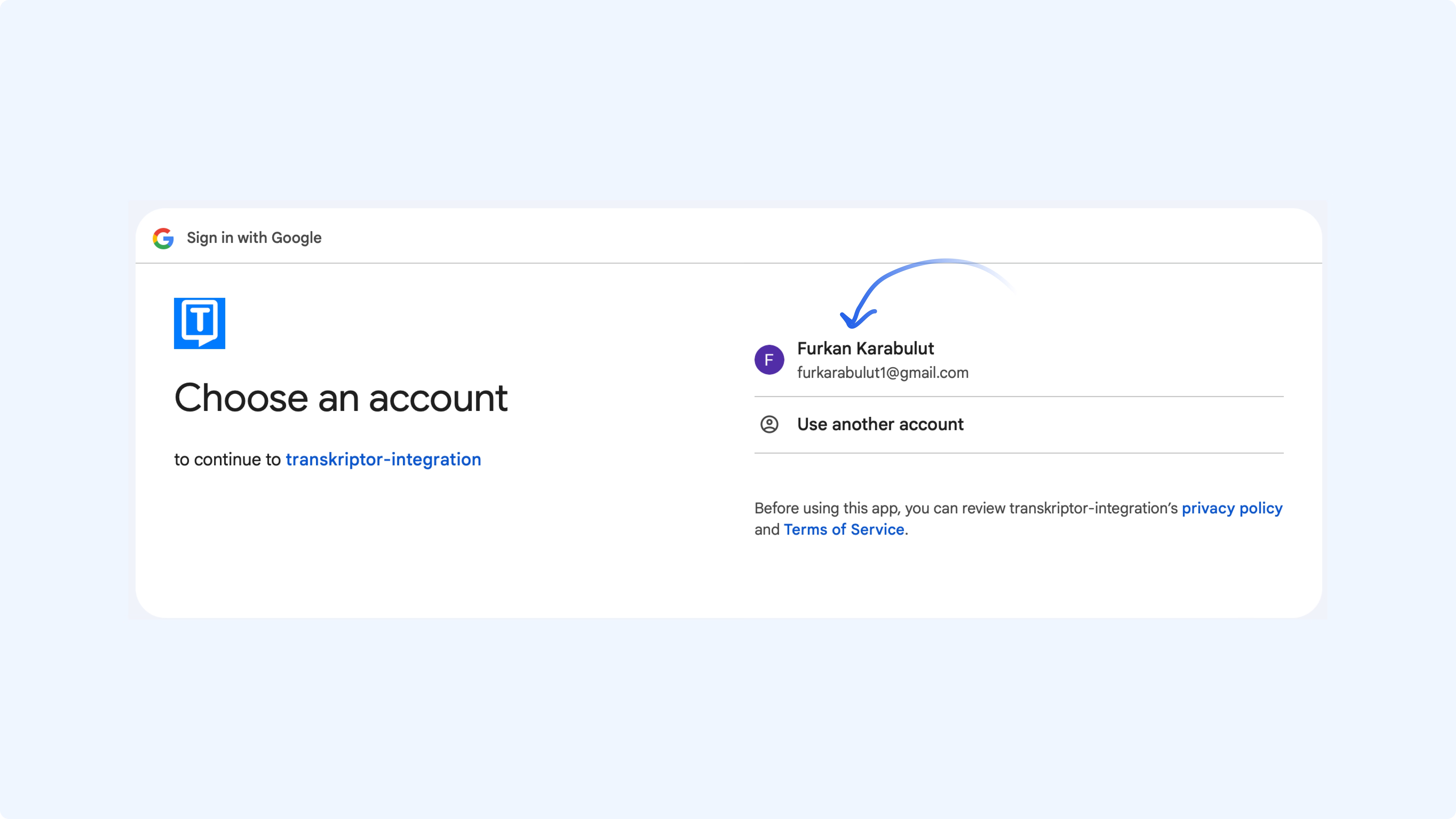
You’ll be redirected back to Transkriptor where you can finalize and configure your integration settings.
Configure the Google Drive Integration
Google Drive integration allows Transkriptor to automatically save all transcription outputs to your Drive. You can choose which files to save and keep everything organized without manual uploads.
Save Transcript: Toggle this on if you want your transcripts automatically saved to Google Drive.The files will be stored in the “Transkriptor > Transcripts” folder.
Save Media: Toggle this on if you want the original audio or video files also saved to Google Drive. The files will be stored in the “Transkriptor > Media” folder.
Save Summary: Toggle this on if you’d like AI-generated summaries to be saved alongside transcripts. The files will be stored in the “Transkriptor > Summaries” folder.
Use the “Additional options” menu in settings for further customization
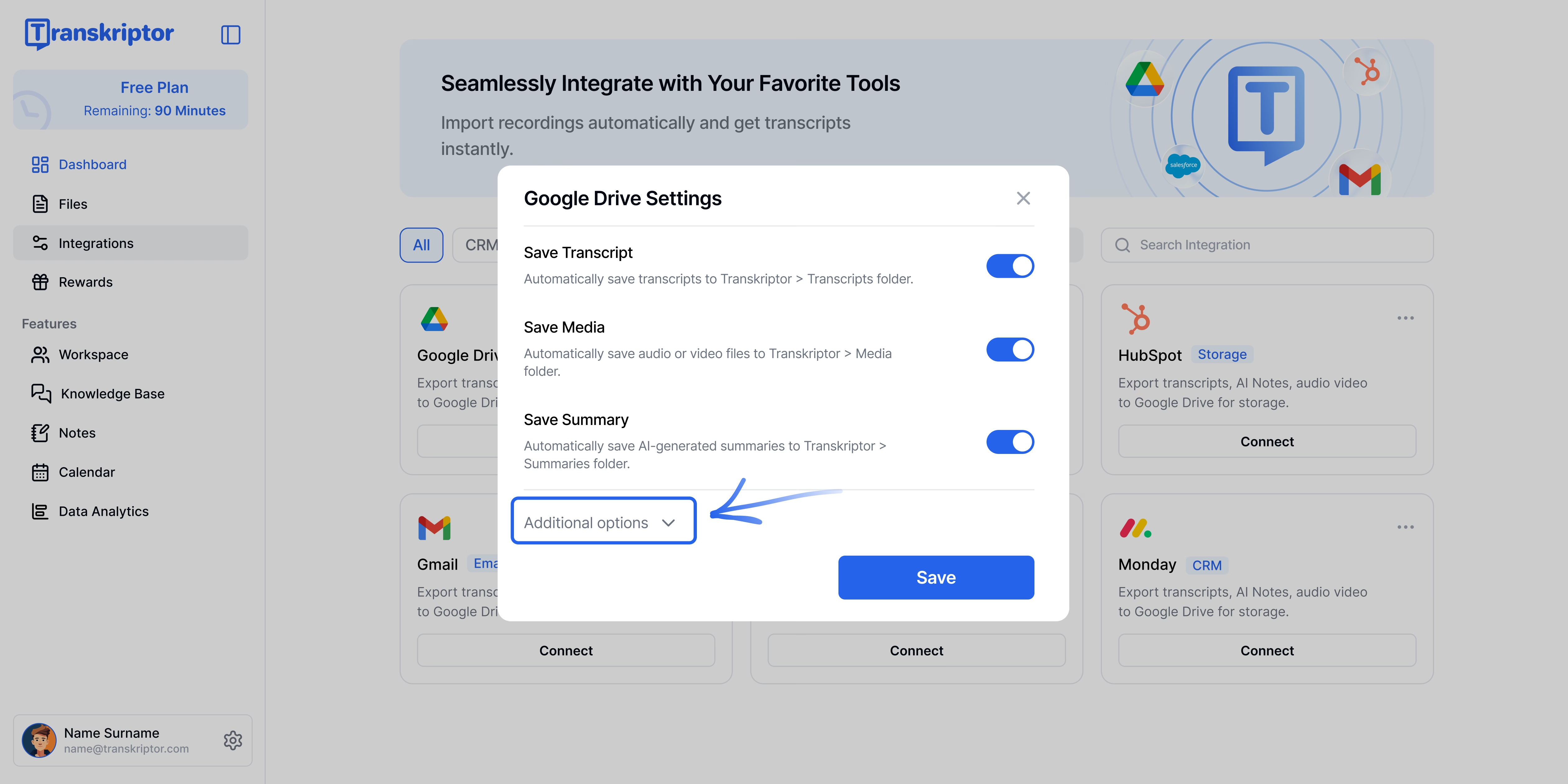
Additional options
The Additional options menu allows you to customize how transcripts and summaries are saved and formatted in your Google Drive.
Transcript Format:
You can choose the file format for your transcript when it is saved to Drive. The available options are Docx, PDF, and SRT. By default, the transcript is saved in Docx format.
Include Speaker Labels:
When this option is enabled, speaker labels (e.g., Speaker 1, Speaker 2) are included in the transcript. This option is turned on by default.
Include Speaker Timestamps:
When this option is enabled, timestamps are included next to speaker segments in the transcript. This option is turned on by default.
Summary Format:
You can also select the file format for AI-generated summaries. The available options are Docx, PDF, and SRT. By default, the summary is saved in Docx format.
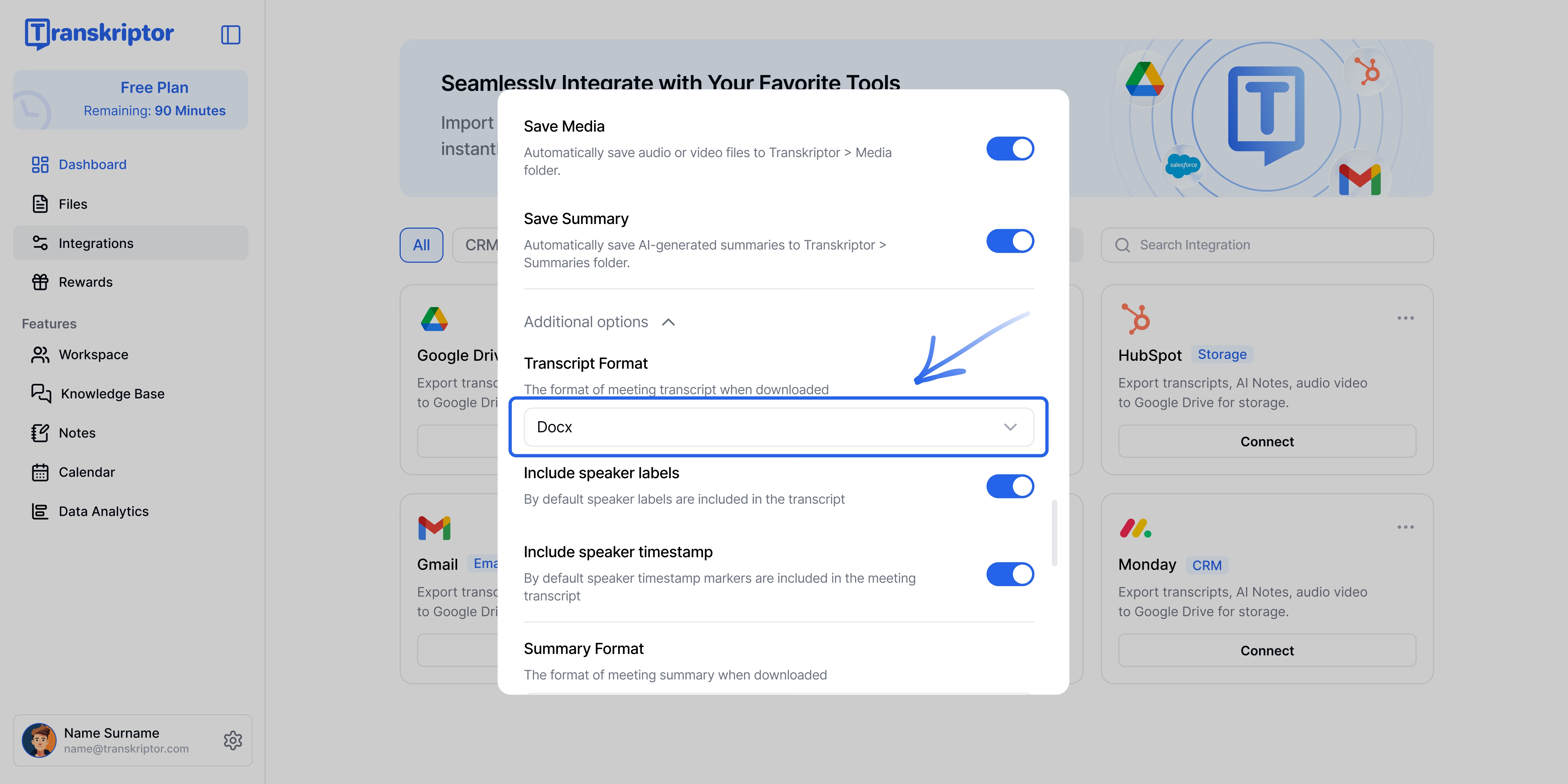
How to Disconnect from the Integration
After connecting Google Drive to Transkriptor, you can click the three-dot icon to either change settings or disconnect the integration.
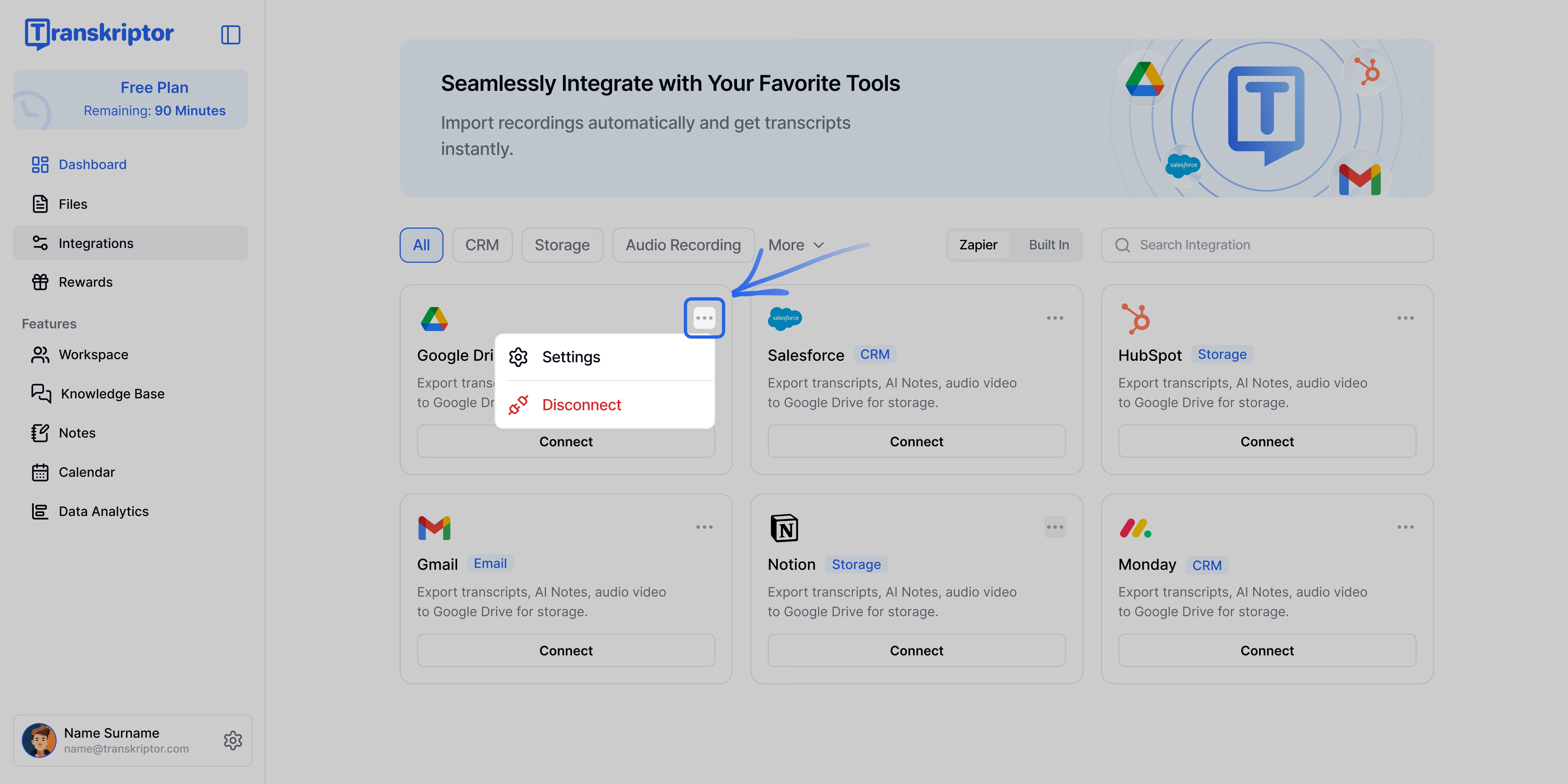
File Organization in Google Drive
Once Google Drive integration is enabled, Transkriptor automatically creates a dedicated Transkriptor folder inside My Drive. Within this folder, outputs are organized into subfolders by file type:
- Media → stores your audio and video files
- Transcripts → stores your text transcripts
- Summaries → stores your AI-generated summaries
This structure keeps all transcription outputs neatly separated and easy to access.
